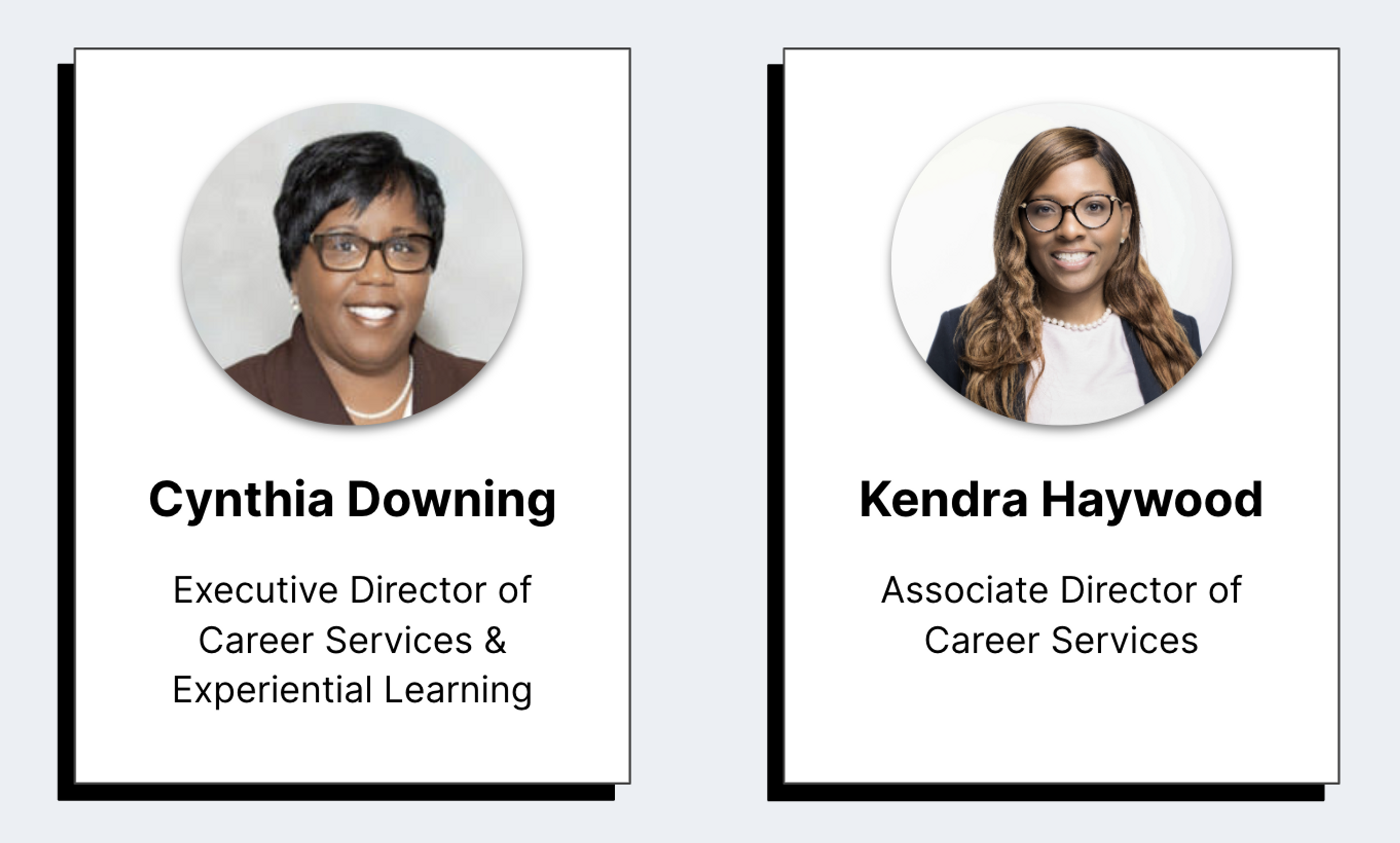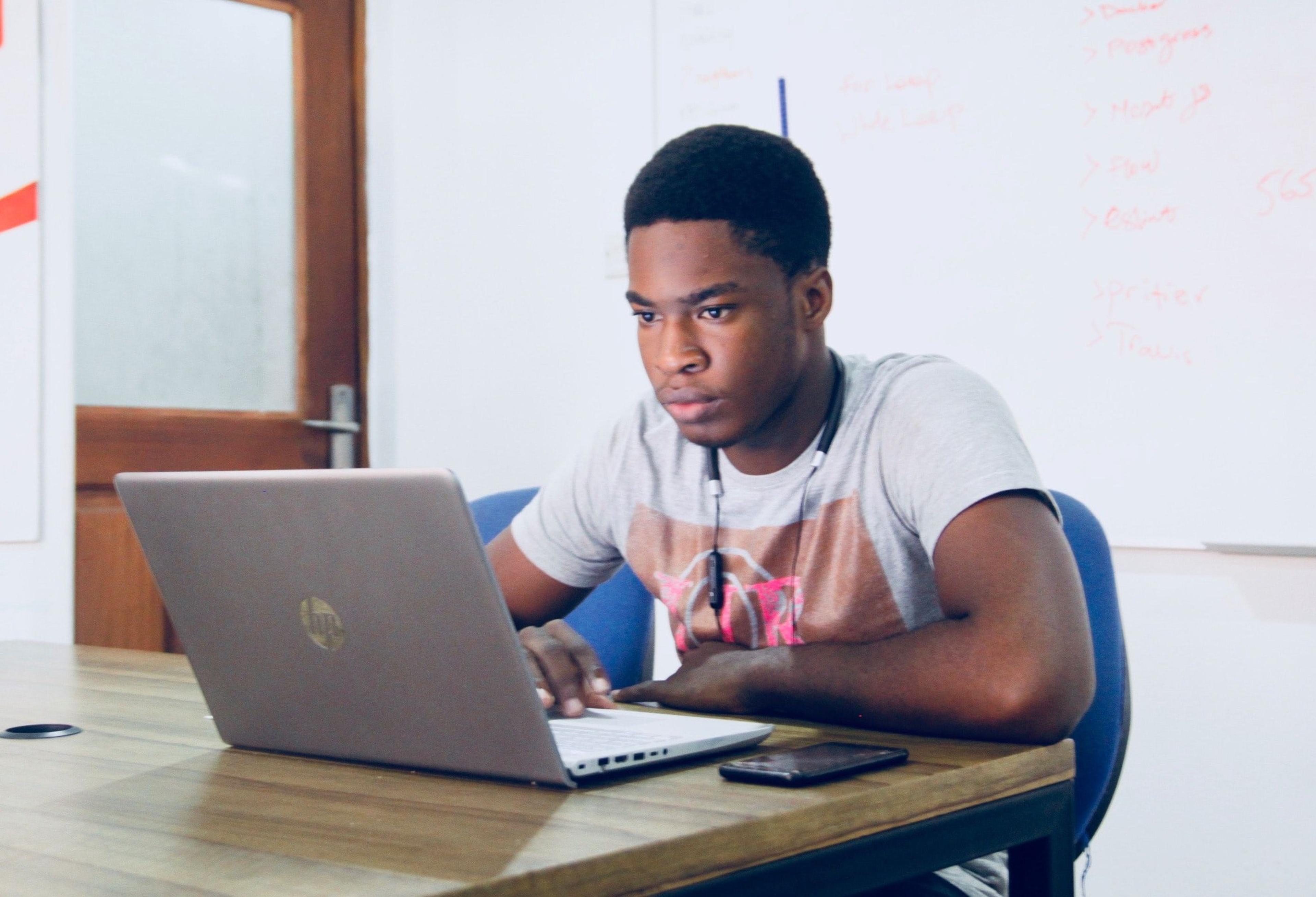In the spring of 2020, at the same time they were implementing Handshake, North Carolina A&T made the decision to host their Career Awareness Virtual Fair on Handshake. Historically an eight-school event hosted in-person, this massive event has been a critical way to bring HBCU students together with employers. Through a multi-faceted marketing strategy and comprehensive staffing plan, the team pulled off this tremendous feat, fostering over 10,000 student-employer virtual connections at the event in September.

Cynthia Downing & Kendra Haywood shared their insights on hosting a virtual fair in Handshake.
A connections-based marketing strategy
When planning an event this large, every marketing channel is in play. Much like they would for an in-person fair, the NC A&T team sent emails, posted on social channels, and put up yard signs. But, with students dispersed like never before, word of mouth, connections-based marketing became more important than ever.
Meeting students where they are
The team took a multi-pronged approach to connecting with students. Student government and greek organizations on campus were engaged to get the word out. They enlisted student workers to share fair details with their friends and on social platforms like GroupMe. They also wrote about the fair in their Parents Newsletter.
The team took a curated approach to promoting via campus faculty. Reaching out via email, they asked key faculty members to repost their fair flyer on social media and throughout academic buildings. Each department got a unique version of the flyer featuring relevant employers in attendance.
Faculty were also encouraged to post the event in Blackboard and offer it as a class assignment or extra credit. Finally, registration data from Handshake was shared to build further buy-in with academic departments.
“The system allowed us to generate pre-career fair student and employer demographic reports to share with campus stakeholders, including the deans and chairpersons. This led to increased participation and buy-in from the colleges.”
Cynthia Downing, Executive Director of Career Services and Experiential Learning
Virtual connections drive employer engagement
Marketing to employers began in late April. While employer engagement was lower to start, the team saw registrations pick up as they increased the frequency of outreach. They hit their registration target in July, right around when they historically had for in-person fairs too.
As with students, virtual connections were key. Faculty were engaged to facilitate introductions to employer contacts. The alumni social media page posted asking other alums to register. The team also reviewed past outcome data to see who had historically hired their students but hadn’t yet registered. All in all, over 300 employers registered.
Supporting students and employers during the fair
The NC A&T team of eight facilitated the fair. In-person, their staff would divy up the list of employers for support. They took the same approach virtually. Ahead of the fair, each team member reached out to their list of employers, offering assistance, answering questions and inviting them to a prep session the week before the fair.
Students were invited to weekly workshops to prepare for the fair. The team also had great success reaching out to students who registered for the fair but hadn’t signed up for any sessions. This allowed them to connect those students with relevant but lesser known employers that had more availability.
Students and employers were invited to a virtual help desk during the fair. The team would answer quick questions in a general room. Breakout rooms were used for more in-depth conversations. Based on their experiences from this first fair, the team started launching the help desk an hour before subsequent fairs. Helping attendees test their equipment before the fair was the main topic of discussion. Once the fair started, attendance in the room dropped off.
Measuring success after the fair
The fair was a huge success. The team received a lot of excited feedback from employers who got to meet with a record number of students. Meanwhile, students shared that they felt more comfortable forming virtual connections, compared to in-person. Scheduling sessions in advance worked better with their class schedules and meant they didn’t have to wait in lines.
The team also used virtual fair benchmark data from Handshake to compare the outcomes of the fair to their peers and quantify their success. Their 10,000 student-employer connection achievement meant the Career Awareness Virtual Fair was the largest on Handshake in the fall of 2020.
